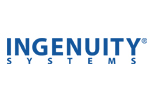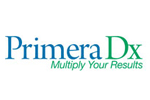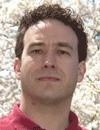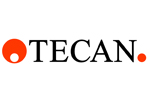
Thursday, 29 September 201108:00 | Registration | |
Session: Advances in DNA and Tissue Arrays |
| | 09:00 |  | Keynote Presentation Real-Time Microarrays - The Path to Quantitation?
Steve Blair, Professor, University of Utah, United States of America
Instrumentation for real-time data acquisition from microarrays will be overviewed, along with a discussion of kinetics analysis methods. The prospects for quantitative data interpretation will be discussed in the context of heteroplasmy and methylation detection. |
| 09:30 | Next Generation Sequencing on Microarrays
Kalim Mir, Visiting Scholar, University of Oxford, United Kingdom
I will show how microarrays can be used as a platform for next generation sequencing and how single molecules can be detected within microarray features. | 10:00 | Automatic Algorithms for Analysis of cDNA Microarray and Chip-seq Data
Luis Rueda, Associate Professor, University of Windsor, Canada
This presentation discusses the new trends on automatically processing cDNA microarray images using clustering algorithms. Applications to processing Chip-Seq data to automatically detect binding sites are also discussed. | 10:30 | Coffee Break and Networking in Exhibition Hall | 11:45 | In Situ. Light- Directed Synthesis of High-Density RNA Microarrays
Mark Somoza, Professor, University of Vienna, Austria
High-density RNA microarrays, with hundreds of thousands of sequences, would be very useful for studying molecules that specifically interact with RNA—such as RNA-binding proteins, ribonucleases and drugs targeting RNA—and to make aptamer arrays for diagnostic applications. | 12:15 |  Technology Spotlight: Technology Spotlight:
Ingenuity iReport for Gene Expression Analysis
, , SelectBio
Megan Laurance, Associate Staff Scientist, Ingenuity Systems
| 12:30 | Lunch Break and Networking in Exhibition Hall | 12:45 |  Free Workshop Free Workshop
Single Sample, Single Slice, Single Prep, Single Well… Multiple Answers
,
| 13:30 | Poster Viewing Session | 14:15 | Gene Expression Profiling of Human Myeloid Leukemic MV4-11 cells Treated with 5-aza-2’-Deoxycytidine
Kyu-Tae Kim, Research Fellow, University of Newcastle, Australia, Australia
In this study, we have treated a human myeloid derived leukemic MV4-11 cell with a demethylating agent 5-aza-2'-deoxycytidine to examine its influence on genome wide gene expression. Whole genome expression profiles were measured using llumina Human Ref-8 arrays. | 14:45 | Using Microarrays to Understand the Developmentally Complex Regulation of the Intestinal Fructose Transporter GLUT5
Rolando Ferraris, Professor, UMDNJ, United States of America
Fructose induces rat GLUT5 expression only during weaning. We segregated age- and fructose-responsive genes and showed that GLUT5 regulation involves cross-talk between nutrient signals regulating specific transporters and hormonal, particularly glucocorticoid receptor-mediated, signals modulating intestinal maturation. | 15:15 | Coffee Break and Networking in Exhibition Hall | 16:00 | New Technologies for Large Scale Manufacturing of High Density Arrays. Design Rules and Cost Drivers
Georg Bauer, Head of R&D, Sony DADC, Germany
High density well and pillar arrays are applied from next generation sequencing to bead-based screening assays and clinical chemistry. The talk will address technical limitations, describes basic design rules and cost drivers. | 16:30 |  | Keynote Presentation Validation of Biomarkers In Tissue
Stephen Hewitt, Clinical Investigator, National Institute of Health, United States of America
Validation of clinical biomarkers remains dependent on demonstration of detection in disease tissue utilizing assays that can be applied in a routine care setting. The application of tissue microarrays has enabled high throughput pathology and speeded the process of biomarker validation. |
| 17:00 | Automating the Analysis of Tissue Microarrays in Basic Science, Clinical and Translational Applications
Toby Cornish, Assistant Professor, Johns Hopkins Medicine Bayview Medical Center, United States of America
Fully-automated segmentation is one of the few remaining obstacles to realizing the tissue microarray (TMA) as a truly high-throughput technique for tissue analysis. Approaches to automatic segmentation will be discussed, including multiplexing of reporters and pattern recognition. | 17:30 | Drinks Reception |
Friday, 30 September 2011 |
Session: Advances in Protein and Antibody Microarrays |
| | 09:00 |  | Keynote Presentation Multiplex Magneto-Nanosensor Array for Protein Quantitation, Antibody Screening, and Kinetics
Shan Wang, Professor and Director, Stanford University, United States of America
Multiplex magneto-nanosensor arrays are used to perform protein quatitation with great speed (30 min. – 2 hours), sensitivity (1 picogram/milliliter concentration levels), selectivity, and economy. This technology is also suitable for rapid antibody screening and highly multiplexed kinetic binding measurements. |
| 09:30 | Actionable Biomarkers for Rheumatoid Arthritis
William Robinson, Associate Professor, Stanford Univeristy School of Medicine, United States of America
We have developed multiplex proteomic tests to guide therapeutic decision making in rheumatoid arthritis (RA). Through proteomic discovery, we have identified autoantibody and cytokine profiles with predictive utility for two actionable situations in RA. First, to facilitate early diagnosis and initiation of disease-modifying therapies that alter the natural history of RA. Second, to identify patients likely to respond to anti-TNF therapeutics. | 10:00 | Via Pre-Recorded Presentation A Systematic Investigation of Candidate Breast Cancer Progression-Associated Biomarkers Identified from Omic Screens: Leveraging Antibody-Based Proteomics
William Gallaghr, Chief Scientific Officer/Professor, OncoMark Limited/University College Dublin, Ireland
A key bottleneck in the translation of discoveries from transcriptomic and proteomic screens into clinically viable diagnostics relates to current deficits in relation to antibody availability. This presentation provides a case example of how antibody-based proteomics can be applied to transition candidate breast cancer progression-related biomarkers from such omic screens. | 10:30 | Coffee Break and Networking in Exhibition Hall | 11:15 | Tumor Autoantibodies as Biomarkers for Predicting Ovarian Cancer Recurrence
Madhumita Chatterjee, Research Scientist, Wayne State University School of Medicine, United States of America
We performed a study on sera from ovarian cancer patients, benign and healthy individuals to identify biomarkers that can predict ovarian cancer diagnosis and recurrence. We will present a validation study using our novel antigens and 13 known tumor antigens. | 11:45 | Protein Microarray Technologies - Analysis of Signaling Networks in Tumours
Markus Templin, Head, University of Tuebingen, Germany
Complex data sets generated from limiting sample material allow the identification of differences in activation of signaling networks directly on the protein level. Protein microarray analysis during anti-cancer drug development will demonstrate the power of the technology. | 12:15 |  Technology Spotlight: Technology Spotlight:
The Automation of Microarray Processing
, , SelectBio
Peter Herzer, Senior Applications Scientist, Tecan
| 12:30 | Lunch Break and Networking in Exhibition Hall | 13:30 | Poster Viewing Session | 14:15 | Protein and Peptide Arrays for Studying Autoimmunity
Paul Utz, Associate Professor, Stanford University School of Medicine, United States of America
Protein and peptide microarrays have tremendous potential for many applications in biology and in medicine. The speaker will present data demonstrating the utility of protein and peptide arrays for characterizing autoantibodies, identifying enzyme substrates, and understanding the epigenetic code. | 14:45 | Antibody Arrays as Diagnostic Tool for Agricultural Research and Development
Nitsara Karoonuthaisiri, Head of Microarray Laboratory, National Center for Genetic Engineering and Biotechnology, Thailand
Antibody arrays were developed for a variety of agricultural applications. Two examples of antibody arrays for detection of foodborne and seedborne pathogens will be presented. These antibody arrays based on mini sandwich ELISA were fabricated in a 96-well plate format. | 15:15 | Coffee Break and Networking in Exhibition Hall | 16:15 | Protein Kinase and Phosphosite Biomarker Discovery and Validation with Protein Microarrays with Antibodies, Lysates, Protein Kinases, and Substrate Peptides
Steven Pelech, President/Chief Scientific Officer/Professor, Kinexus Bioinformatics Corporation, Canada
Kinexus identified 650,000 known/predicted human phospho-sites, investigated their evolutionary conservation, and deduced the substrate specificities for 500 kinases. A unique suite of microarrays with antibody, cell/tissue lysates, protein kinases, and peptides were created to experimentally test these bioinformatics predictions. | 16:45 | Close of Conference |
|

 Add to Calendar ▼2011-09-29 00:00:002011-09-30 00:00:00Europe/LondonMicroarray World CongressMicroarray World Congress in San Francisco, USASan Francisco, USASELECTBIOenquiries@selectbiosciences.com
Add to Calendar ▼2011-09-29 00:00:002011-09-30 00:00:00Europe/LondonMicroarray World CongressMicroarray World Congress in San Francisco, USASan Francisco, USASELECTBIOenquiries@selectbiosciences.com